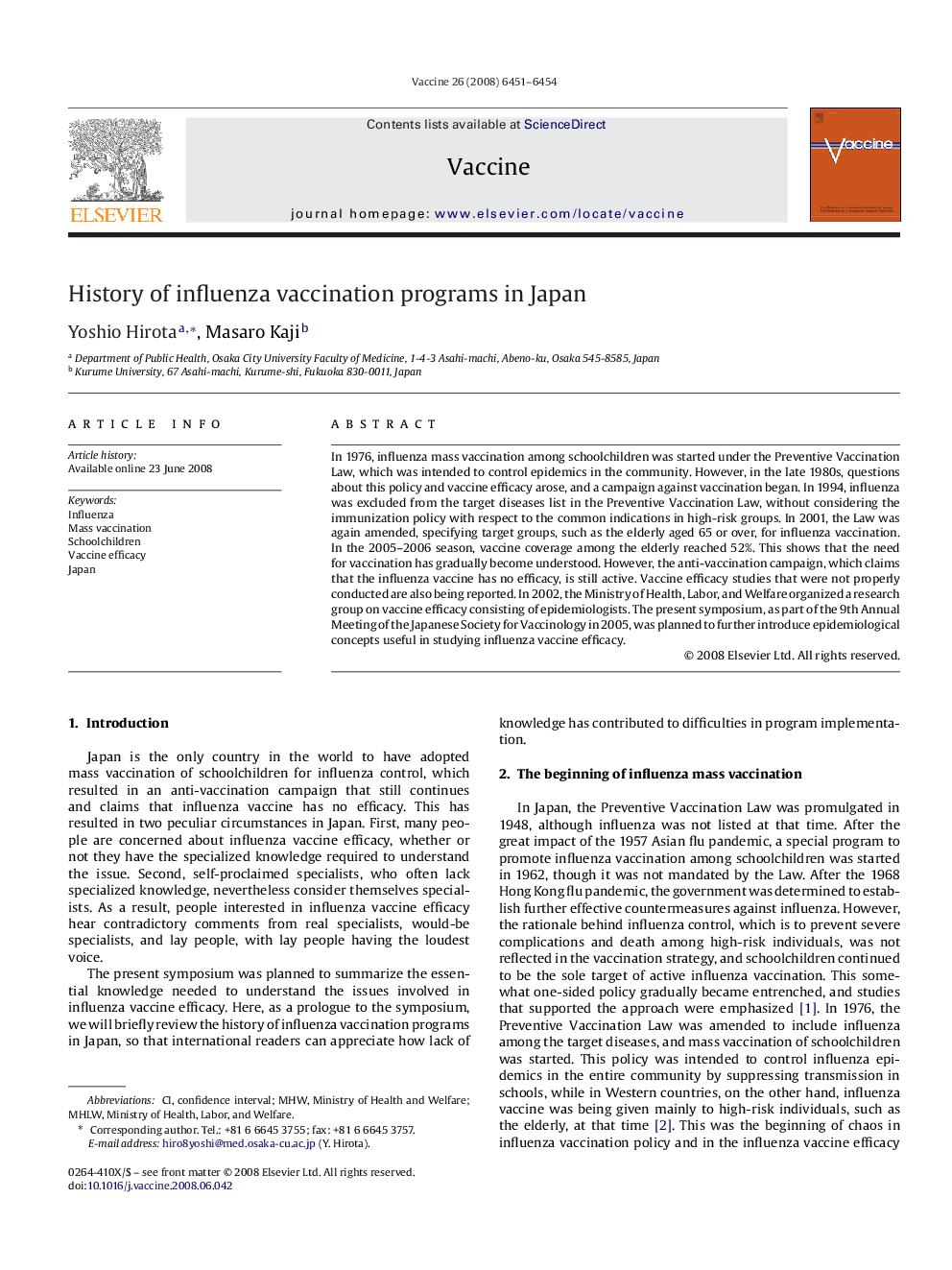| Article ID | Journal | Published Year | Pages | File Type |
|---|---|---|---|---|
| 2406437 | Vaccine | 2008 | 4 Pages |
In 1976, influenza mass vaccination among schoolchildren was started under the Preventive Vaccination Law, which was intended to control epidemics in the community. However, in the late 1980s, questions about this policy and vaccine efficacy arose, and a campaign against vaccination began. In 1994, influenza was excluded from the target diseases list in the Preventive Vaccination Law, without considering the immunization policy with respect to the common indications in high-risk groups. In 2001, the Law was again amended, specifying target groups, such as the elderly aged 65 or over, for influenza vaccination. In the 2005–2006 season, vaccine coverage among the elderly reached 52%. This shows that the need for vaccination has gradually become understood. However, the anti-vaccination campaign, which claims that the influenza vaccine has no efficacy, is still active. Vaccine efficacy studies that were not properly conducted are also being reported. In 2002, the Ministry of Health, Labor, and Welfare organized a research group on vaccine efficacy consisting of epidemiologists. The present symposium, as part of the 9th Annual Meeting of the Japanese Society for Vaccinology in 2005, was planned to further introduce epidemiological concepts useful in studying influenza vaccine efficacy.
